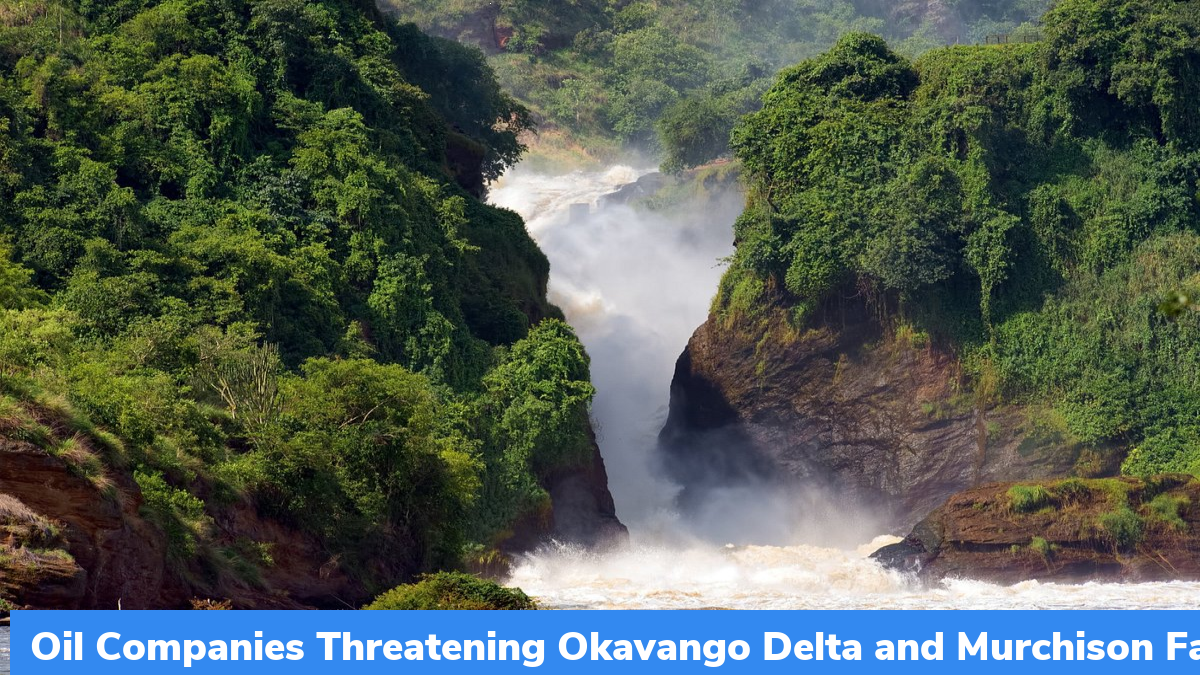Oil Companies Threatening Okavango, Murchison Falls
A report titled “Who is Financing Fossil Fuel Expansion in Africa?” was released recently by a German non-profit Urgewald.
About Okavango delta
The Okavango delta, a UNESCO World Heritage Site, is a vast inland river delta in the northern part of Botswana. The Moremi Game Reserve is situated at the eastern side of the delta. The Okavango delta is formed by the Okavango river, which raises from the highlands of Angola and flows into the Kalahari Desert of southern Africa. The Okavango river makes the otherwise dry region a waterlogged wetland, providing a vital source of water for flora, and fauna as well as a population of over 1 million people. It is the homeland for several indigenous communities like the San. It is home of Africa’s Big Five wildlife species – Savanna elephants, Cape buffaloes, rhinos, lions and leopards. It also hosts 400 bird species and some 1,000 plant species.
About Murchison Falls National Park
Murchison Falls National Park (MNFP) is Uganda’s largest national park, spanning across 3,893 square kilometres of land. It is the location of the Murchison Falls, where waters of the Nile river flows through a 7-meter-wide gorge before plunging 43 meters. The river supports the survival of elephants, hippos, Nile crocodiles, buffaloes and marabou storks. It harbours some 446 bird species and 188 mammal species.
What are the key highlights of the report?
Oil companies are threatening the Okavango delta and Murchison Falls. They are just two of the many biodiversity hotspots in Africa that are threatened by oil exploration and extraction projects. In 48 out of 55 African countries, oil, gas and coal companies are exploring or developing new fossil reserves, building new fossil infrastructure like pipelines or LNG terminals or building new thermal power plants. These projects are threatening wildlife and have the potential of making the local communities homeless. The oil drilled within these hotspots is benefiting the global elite and not Africans.
Threat to Okavango delta
- The Okavango delta is currently under threat as ReconAfrica, a Canadian company, has been drilling for oil in the Kavango Zambezi Transfrontier Nature Conservation Area (KAZA) – the world’s second-largest nature and landscape conservation area spanning across the border of Angola, Botswana, Namibia, Zambia and Zimbabwe.
- ReconAfrica has expanded its operations into conservation areas, clearing forests and drilling wells without the knowledge or approval from the local communities. Even when the Canadian company did provide the information, it only did so in English – the non-native language of the local communities.
- More than 2 lakh people live in the regions that fall under ReconAfrica’s exploration licenses.
- The projects like drill rigs, oil pipelines, pumping stations and roads can fragment the region, disrupt territories and obstruct migration routes.
- Tourism in the region is adversely affected as tourists are not willing to visit an industrialized oil landscape.
- These projects are also threatening to cause oil spill, which could pollute Okavango River and ultimately also the Okavango delta. This is in addition to threats like noise pollution, infrastructure construction, toxic chemicals and oil spills.
Threat to Murchison Falls National Park
- The Murchison Falls is situated on the northern shore of Lake Albert – one of the Rift Valley Great Lakes that sits between the border of Uganda and the Democratic Republic of Congo (DRC).
- The park and the nearby regions are currently under threat since oil fields are situated in the area around Lake Albert.
- French oil giant TotalEnergies and China’s National Offshore Oil Company (CNOOC) are currently planning to exploit 1 billion barrels of crude oil from the Tilenga oil field and Kingfisher oil field, which are situated at the Lake Albert’s northern and southern tips respectively.
- Feeder pipelines are also present, connecting the oil fields to a central processing facility, and then to the neighbouring district of Hoima, where the East African Crude Oil Pipeline (EACOP) would start.
- The EASCOP will transport crude oil via Uganda and Tanzania, cutting through vital natural habitats, to the Indian Ocean Port of Tanga. The oil will be transferred from this port to the oil tankers, which navigate through mangrove swamps and coral reefs to export the oil.
- The pipeline will also pass through 178 villages in Uganda and 231 villages in Tanzania, forcing some 1 lakh people off their homelands.
Month: Current Affairs - December, 2022


